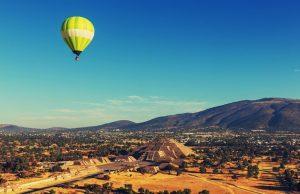 Chances are, you have seen images of Chichen Itza or Palenque, the stunning archeological remains of grand Mayan cities in Mexico. Perhaps you’ve even visited these sites at some point. Considerably less well-known, though, is Teotihuacan, or “the place where the gods were created.” In my mind, the UNESCO World Heritage site of Teotihuacan is western hemisphere’s ultimate pyramid city, vastly more impressive than even its more famous brethren on the Yucatan peninsula. Only 10% of the city has been excavated – and it is still enough to cause the most seasoned traveler to gape in astonishment.
Chances are, you have seen images of Chichen Itza or Palenque, the stunning archeological remains of grand Mayan cities in Mexico. Perhaps you’ve even visited these sites at some point. Considerably less well-known, though, is Teotihuacan, or “the place where the gods were created.” In my mind, the UNESCO World Heritage site of Teotihuacan is western hemisphere’s ultimate pyramid city, vastly more impressive than even its more famous brethren on the Yucatan peninsula. Only 10% of the city has been excavated – and it is still enough to cause the most seasoned traveler to gape in astonishment.
Teotihuacan is located in central Mexico, only about an hour bus ride from Mexico City, making it a perfect day trip destination. It features a large array of remarkably well-preserved pyramids, temples ornately adorned with art, grand boulevards interwoven with remnants of centuries-old streets, and numerous marketplaces. Even a river diverted through the city center in ancient times remains today. At the far end the main boulevard known as the Avenue of the Dead, the giant Pyramid of the Moon watches over a grand complex of religious and royal courts, much as it has for the past two millennia.
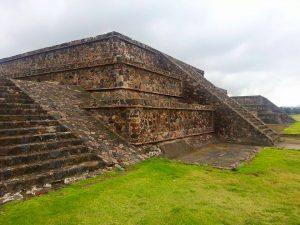
One of the many smaller pyramids that lines the Avenue of the Dead

Pyramid of the Sun
Just as fascinating as its grand architecture, though, are Teotihuacan’s incredibly well preserved art murals decorating the walls of its many temples, including at the Temple of the Jaguar and the Temple of Quetzalcoatl. The plethora of temples dedicated to various gods certainly point to Teotihuacan’s pre-eminent role as a religious epicenter. One can see why later societies, such as the Aztec, referred to it as “place where the gods were created.” Red, white and green dyes dominate throughout the religious and royal buildings and this color scheme is said to have inspired the very colors of the modern Mexican flag.
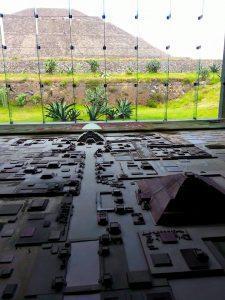
Model of the excavated portion of the city showing Pyramid of the Sun in front, Pyramid of the Moon at the end of Avenue of the Dead. Actual Pyramid of the Sun visible in background.
Teotihuacan began to steadily decline in the middle of the seventh century C.E. and was finally completely abandoned after a massive fire destroyed most of it. While it was never really re-settled, Aztecs began to use it for regular ceremonial purposes centuries later as they migrated to the region.
Today, Teotihuacan’s fantastic scale bears witness to the capabilities of pre-Columbian Mesoamerican societies. I invite you to ascend the stairs to the top of the Pyramid of the Sun and imagine this city before it was reconquered by the jungle. Just imagine, the very gods were created here!
-
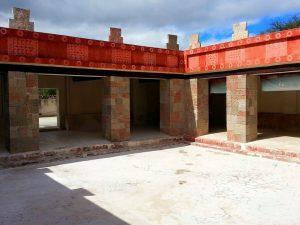
- Royal courtyards, dyed in bright red
-
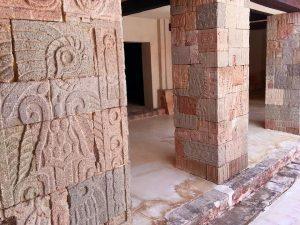
- Royal courtyards
-
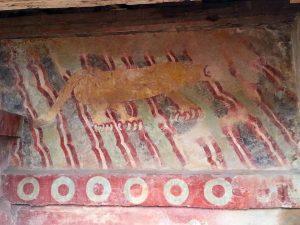
- Jaguar mural inside Temple of the Jaguar. Colors of modern Mexican flag are claimed to have originated from this design.
-
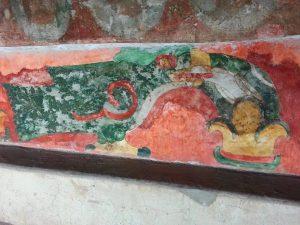
- Snake mural, inside Temple of Quetzalcoatl

